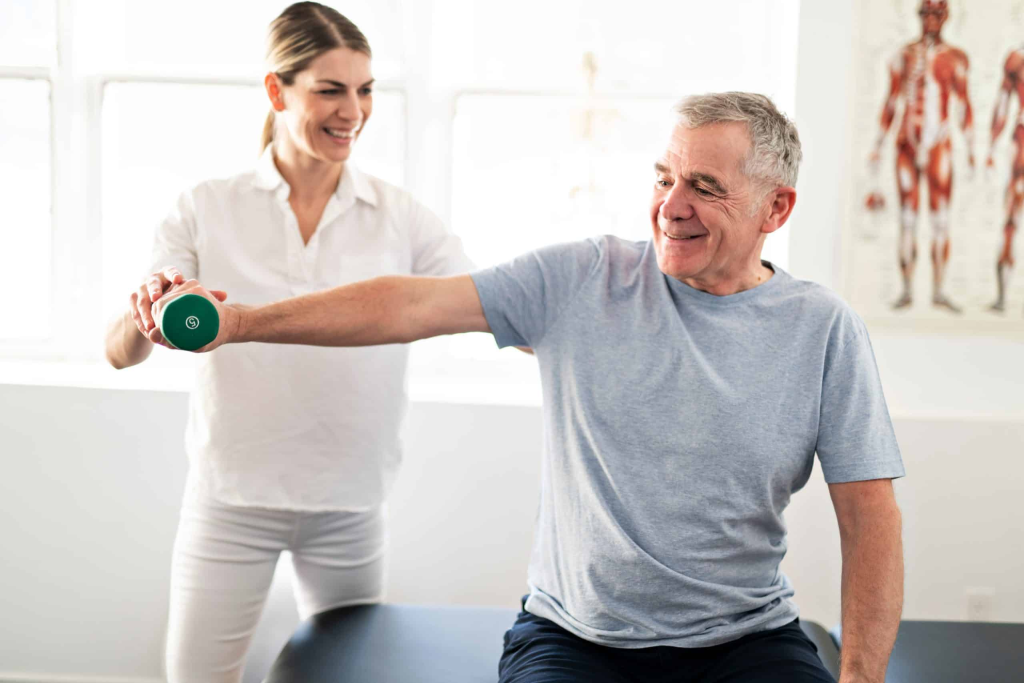Stretching and yoga are two of the most accessible and effective practices for improving physical health. While often underestimated, these gentle yet powerful movements can bring incredible benefits when done consistently. Whether you’re a beginner or someone looking to add something new to your wellness routine, understanding the physical health benefits of stretching and yoga is a great place to start.
What Is Stretching?
Stretching is the process of deliberately elongating muscles or tendons to improve flexibility, range of motion, and circulation. There are different types of stretching, including static (holding a stretch for a period), dynamic (moving through a full range of motion), and active (holding a stretch using your own muscle strength). Stretching helps warm up the muscles before exercise and relax them after activity, reducing the risk of injury and soreness.
What Is Yoga?
Yoga is an ancient practice that combines physical postures (called asanas), breathing techniques (pranayama), and meditation. It focuses not only on flexibility and strength but also on mental clarity and relaxation. Yoga includes movements that stretch, strengthen, and align the body. It is suitable for all ages and fitness levels.
1. Improved Flexibility
One of the most well-known benefits of both stretching and yoga is increased flexibility. When your muscles and joints are more flexible, you can move more freely and easily. This reduces the risk of strains and sprains. Over time, consistent stretching or yoga practice can help reduce stiffness and make everyday movements, like bending or reaching, more comfortable.
2. Better Posture and Alignment
Poor posture can lead to back, neck, and shoulder pain. Stretching and yoga help correct imbalances in the body. Yoga focuses on alignment and mindful movement, which helps you become aware of how you sit, stand, and move. Certain poses, such as mountain pose and downward dog, help build body awareness and improve posture over time.
3. Increased Muscle Strength
Many people assume that yoga is only about flexibility, but that’s not true. Yoga also builds muscle strength using your own body weight. Poses like plank, warrior, and chair strengthen the core, legs, and arms. Strong muscles support your joints and bones, making physical activity safer and more effective.
4. Enhanced Joint Health
Yoga and stretching keep joints healthy by encouraging the production of synovial fluid, which lubricates the joints. This can be especially beneficial for people with arthritis or joint stiffness. Regular movement prevents joint degeneration and increases the ability to move pain-free.
5. Improved Balance and Stability
As we age, balance becomes more important in preventing falls and maintaining independence. Yoga involves many balance poses like tree pose and eagle pose that train your body to stay steady and stable. Stretching improves coordination and control, making movements more fluid.
6. Reduced Muscle Soreness
After a workout or even a long day of physical activity, muscles can feel sore or tight. Stretching post-exercise helps release tension in the muscles and enhances recovery. Yoga, especially gentle styles like Yin or Restorative, can be used as a recovery tool to relax and lengthen the muscles without putting too much strain on the body.
7. Boosted Circulation
Stretching and yoga improve blood flow, delivering more oxygen and nutrients to your muscles and organs. Improved circulation can lead to better heart health, increased energy levels, and even healthier skin. Inversions like legs-up-the-wall or downward dog in yoga promote venous return and reduce swelling in the legs.
8. Supports Healthy Breathing
Yoga emphasizes deep, mindful breathing. This activates the parasympathetic nervous system, which helps you relax. Deep breathing improves lung capacity and oxygen intake. While stretching alone doesn’t usually include breathing techniques, pairing the two—like in yoga—can significantly enhance the overall effect on your physical health.
9. Aids in Digestion
Certain yoga poses massage internal organs, helping to stimulate the digestive system. Twisting poses can improve metabolism and reduce bloating or constipation. When your body is less stressed and more active, your digestion naturally becomes more efficient.
10. Helps Prevent Injuries
Tight muscles and imbalances are a common cause of injuries. Stretching and yoga lengthen the muscles, make them more resilient, and help you become more aware of your body’s limits. Athletes, in particular, use yoga and stretching to prevent sports-related injuries by maintaining optimal muscle condition.
11. Alleviates Back Pain
Stretching the spine and surrounding muscles can greatly reduce back pain. Yoga poses like cat-cow, cobra, and child’s pose stretch the spine and relieve tension. These movements improve posture and strengthen the back, reducing chronic discomfort from sitting or standing for long periods.
12. Encourages Mind-Body Connection
One of yoga’s greatest benefits is how it brings awareness to both the body and mind. You begin to notice which areas are tight, where you hold tension, and how you move. Stretching becomes more meaningful when practiced with intention, helping you tune into your body’s needs.
13. Supports Weight Management
While yoga may not burn as many calories as intense cardio workouts, it supports a healthy metabolism and can aid in weight loss or maintenance. Improved muscle tone, reduced stress (which lowers cortisol), and better digestion all play a role in managing body weight.
14. Improves Sleep Quality
Stretching and yoga both promote relaxation. When your body is more relaxed, it becomes easier to fall asleep and stay asleep. Gentle bedtime yoga or simple stretches can calm the nervous system and signal the body that it’s time to rest.
15. Suitable for All Ages
Yoga and stretching are low-impact, making them ideal for people of all ages and fitness levels. Kids, adults, seniors—even pregnant individuals—can benefit from gentle movement. It’s never too late to start!
Conclusion
The physical health benefits of stretching and yoga go far beyond just touching your toes. These simple practices improve flexibility, strength, posture, and overall wellness. They support your joints, muscles, and internal systems, making your body more resilient and your mind more relaxed. Whether you’re recovering from injury, trying to get fit, or just seeking a calm routine, yoga and stretching offer a powerful yet gentle path to better health. Best of all, you don’t need a gym, expensive equipment, or years of training to start—just a few minutes a day can make a lasting difference.
5 Frequently Asked Questions (FAQs)
1. How often should I do yoga or stretch to see results?
You can start with 3–5 days a week. Even short daily sessions of 10–15 minutes can bring benefits over time. Consistency is more important than intensity.
2. Is yoga a good substitute for traditional exercise?
Yes and no. While yoga improves strength and flexibility, it may not raise your heart rate like cardio workouts. It’s ideal as a complement to other exercises or as a standalone practice for those with lower fitness levels.
3. Can stretching or yoga help with chronic pain?
Yes. Many people with chronic pain, including arthritis or back pain, report relief with regular yoga and stretching. However, always consult a doctor before starting a new routine.
4. What’s the difference between yoga and regular stretching?
Yoga involves not just physical stretches but also breathing and mindfulness. Stretching is more focused on improving flexibility in specific muscles without the meditative aspect.
5. Do I need to be flexible to start yoga?
Not at all! Yoga is for all levels. The more you practice, the more flexible you’ll become. You can modify poses to fit your current ability and gradually build up.

